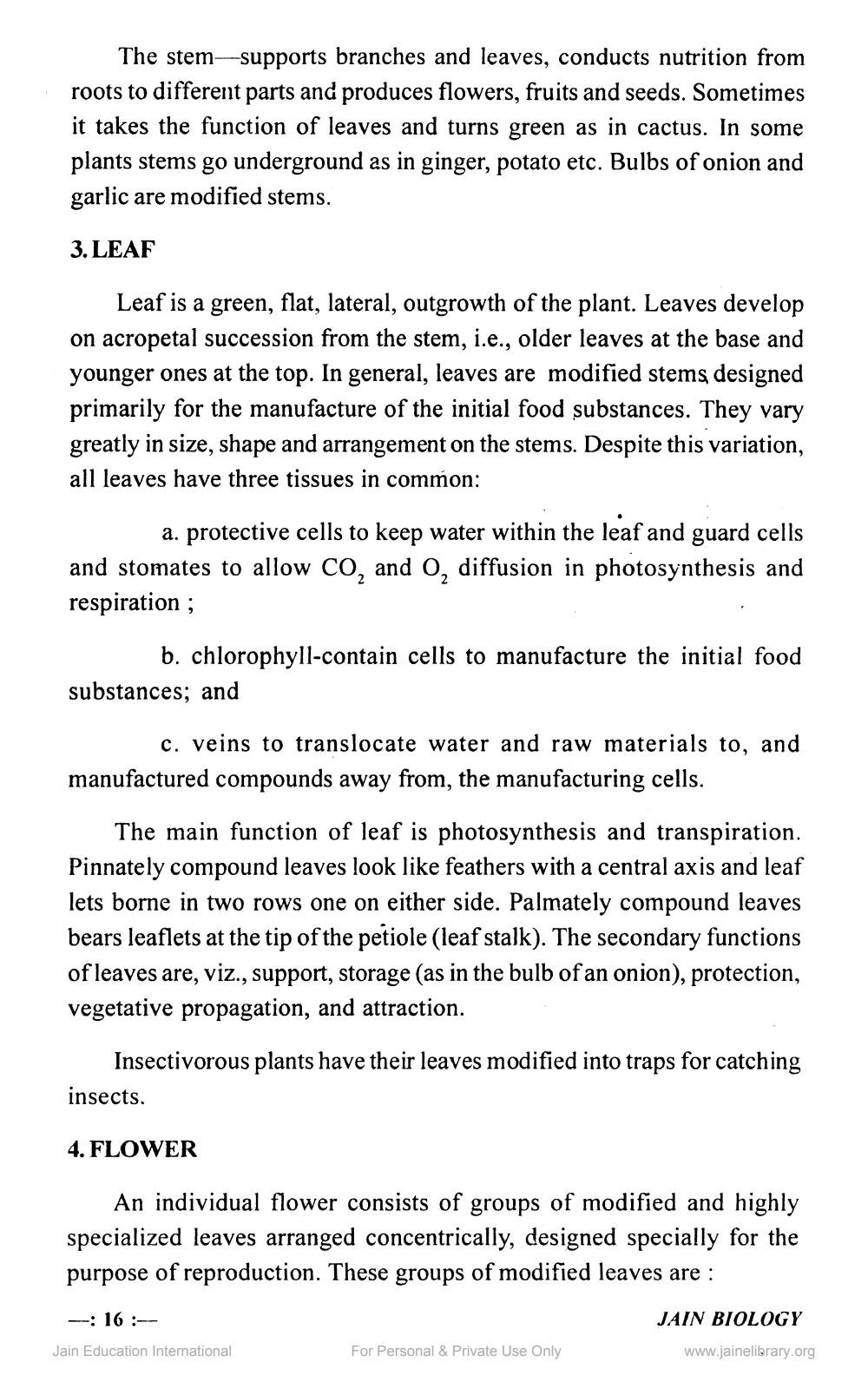________________
The stem--supports branches and leaves, conducts nutrition from roots to different parts and produces flowers, fruits and seeds. Sometimes it takes the function of leaves and turns green as in cactus. In some plants stems go underground as in ginger, potato etc. Bulbs of onion and garlic are modified stems.
3. LEAF
Leaf is a green, flat, lateral, outgrowth of the plant. Leaves develop on acropetal succession from the stem, i.e., older leaves at the base and younger ones at the top. In general, leaves are modified stems designed primarily for the manufacture of the initial food substances. They vary greatly in size, shape and arrangement on the stems. Despite this variation, all leaves have three tissues in common:
a. protective cells to keep water within the leaf and guard cells and stomates to allow CO, and O, diffusion in photosynthesis and respiration ;
b. chlorophyll-contain cells to manufacture the initial food substances; and
c. veins to translocate water and raw materials to, and manufactured compounds away from, the manufacturing cells.
The main function of leaf is photosynthesis and transpiration. Pinnately compound leaves look like feathers with a central axis and leaf lets borne in two rows one on either side. Palmately compound leaves bears leaflets at the tip of the petiole (leaf stalk). The secondary functions of leaves are, viz., support, storage (as in the bulb of an onion), protection, vegetative propagation, and attraction.
Insectivorous plants have their leaves modified into traps for catching insects.
4. FLOWER
An individual flower consists of groups of modified and highly specialized leaves arranged concentrically, designed specially for the purpose of reproduction. These groups of modified leaves are : --: 16 :--
JAIN BIOLOGY
Jain Education International
For Personal & Private Use Only
www.jainelibrary.org




